In this episode of The Gentle Parenting Show, Kim goes solo to break down a hot topic: no crying sleep training. While there is such a thing as gentle sleep training (check out Kim’s world-renowned sleep training program HERE), there is no such thing as no crying sleep training. In this episode, Kim breaks down the three factors that affect crying while sleeping training.
Before she gets into the factors of crying while sleep training, Kim wants all listeners to understand that sleep is a learned skill. You would think it comes naturally, like eating or pooping, but it’s something a baby or child has to learn. Kim gives an example of an adult in the same situation. Say, for example, you have an early flight that requires a 4:00 am wake-up call. You may go through your nighttime routine and head to bed early at 9:00 pm. But, when your head hits your pillow, you can’t sleep. You have to find something to do with your thoughts so you can fall asleep.
Babies and children are similar. Unless they are extremely tired, they aren’t just going to fall asleep on their own. They need to learn how to get their body and mind to a place where they can fall asleep. Kim equates sleep training a baby or child to an adult having to learn new software – it can be really frustrating! A pre-verbal child (infants and babies) will cry with this frustration. A verbal child (toddler and child) will instead yell and talk with this frustration.
There is no way to change behavior without some kind of protest. There will be tears with any new milestone in your child’s development. No parent likes to hear crying, Kim understands. But, if you understand the factors that affect crying, it will help you calmly move forward in your child’s sleep training.
No-Crying Sleep Training: Factors That Affect Crying
Factor 1: Age of Child
The age of your child greatly affects how much crying comes with sleep training. In fact, younger babies don’t cry or protest as long as toddlers do when sleep training. Older children have more skills to protest.
Kim is often asked what the “easiest” age to sleep train is. Kim answers that 6-8 months is the best age to begin sleep training. This is because, at this age, they haven’t hit major milestones like standing up or walking. At this age, sleep training, even gentle sleep training, usually only takes 7-10 days.
Another big factor in crying while sleep training is if a child is in a bed. If a child under 2.5 years is in a bed when you choose to sleep train, they won’t have the cognitive skills to stay in their bed all night. They won’t be able to understand what you’re asking them to do. Kim says that she believes a gentle approach is best for children in beds.
Knowing these expectations and age capabilities helps you when sleep training.
Factor 2: Temperament of Child
Of course, the temperament of your child greatly affects how much crying will happen while sleep training. There is no right or wrong temperament for sleep training – every child is capable, but some may require more time than others.
Kim has found that over 80% of children she has helped sleep train are very alert children. Her own child was an alert baby. From the very beginning, that child was wide awake, taking everything in and not missing a beat. For a child like this, they are so attentive that they have a hard time sleeping and blocking the world out. They may require a lot more specifics for sleeping than another child. They may not be as adaptable to sleeping on the go as other children.
Sleeping coaching these active, alert kids is not impossible. A lot of parents actually think that the cry-it-out approach is the only way to sleep train children and babies with this temperament. In reality, active babies and children just need more transition time and more help with filtering. They don’t do well being rushed into sleep.
Kim advises to listen to her episode with Macall Gordon where they talk all about sleep training and temperament. You can listen to that right HERE. Lastly, Kim advises to not get discouraged when you hear of a friend being able to sleep train their child with easy success – just know that the temperament of every child, and parent, is different.
Factor 3: Consistency
When sleep training, it can be easy to fall into the trap of intermittent reinforcement. Countless studies have shown that intermittent reinforcement is the most powerful reinforcer. Intermittent reinforcement is not consistent, which is a necessity when sleep training. An example of intermittent reinforcement is casinos and slot machines. You can put your money in a slot machine and be on a losing streak until you all of a sudden win. Winning intermittently reinforces your want to stay in that same seat when in reality your chances would be better if you moved to another machine.
Intermittent reinforcement happens all of the time in sleep training. When your baby or child wakes up crying, sometimes they’re fed, sometimes they’re held, and sometimes they are left to cry it out. This creates confusion and frustration for your child. They don’t know what to expect when they wake up, which creates more crying. Sleep training like this takes longer and usually gets worse before it gets better.
This is why having a consistent sleep training plan is key. If you know exactly what you’ll do when your child wakes up crying, they won’t be left to guess, they won’t get confused, and they will catch on to sleep training more quickly. Having a sleep coach create that plan for you can be extremely helpful, and you can see our list of certified Gentle Sleep Coaches HERE.
Can You Achieve No Crying Sleep Training?
There will always be tears and frustration while trying to change behavior. But, if you pay attention to the three factors of crying, you can greatly minimize the tears. You can understand and make sense of your child’s crying while sleep training.
If you keep with your program and stay consistent, it will always get better. However, if you have consistently sleep training and see no results, Kim advises you to visit your pediatrician to rule out any health factors.



